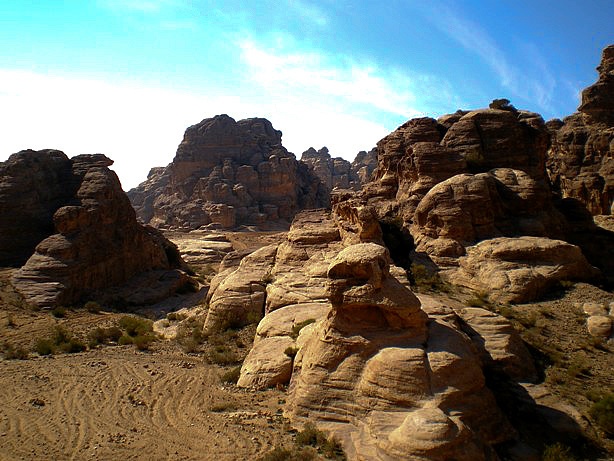
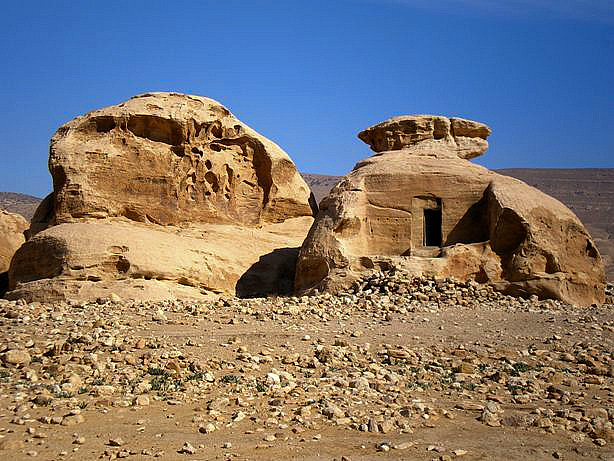
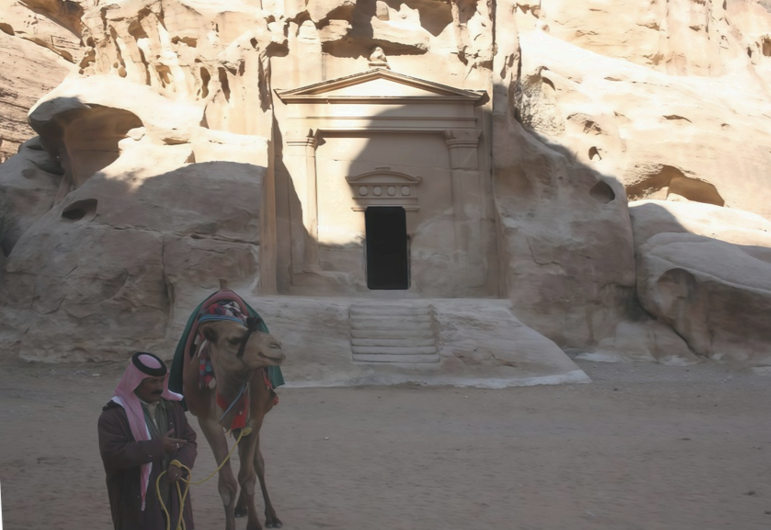
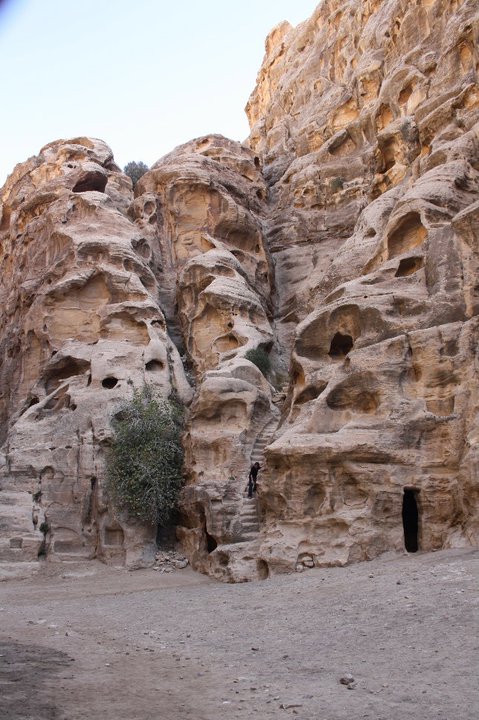
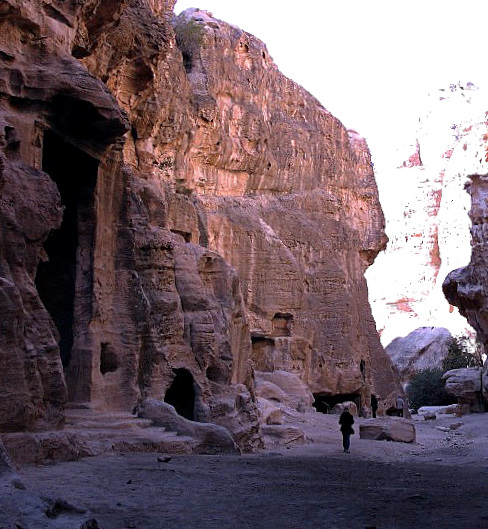
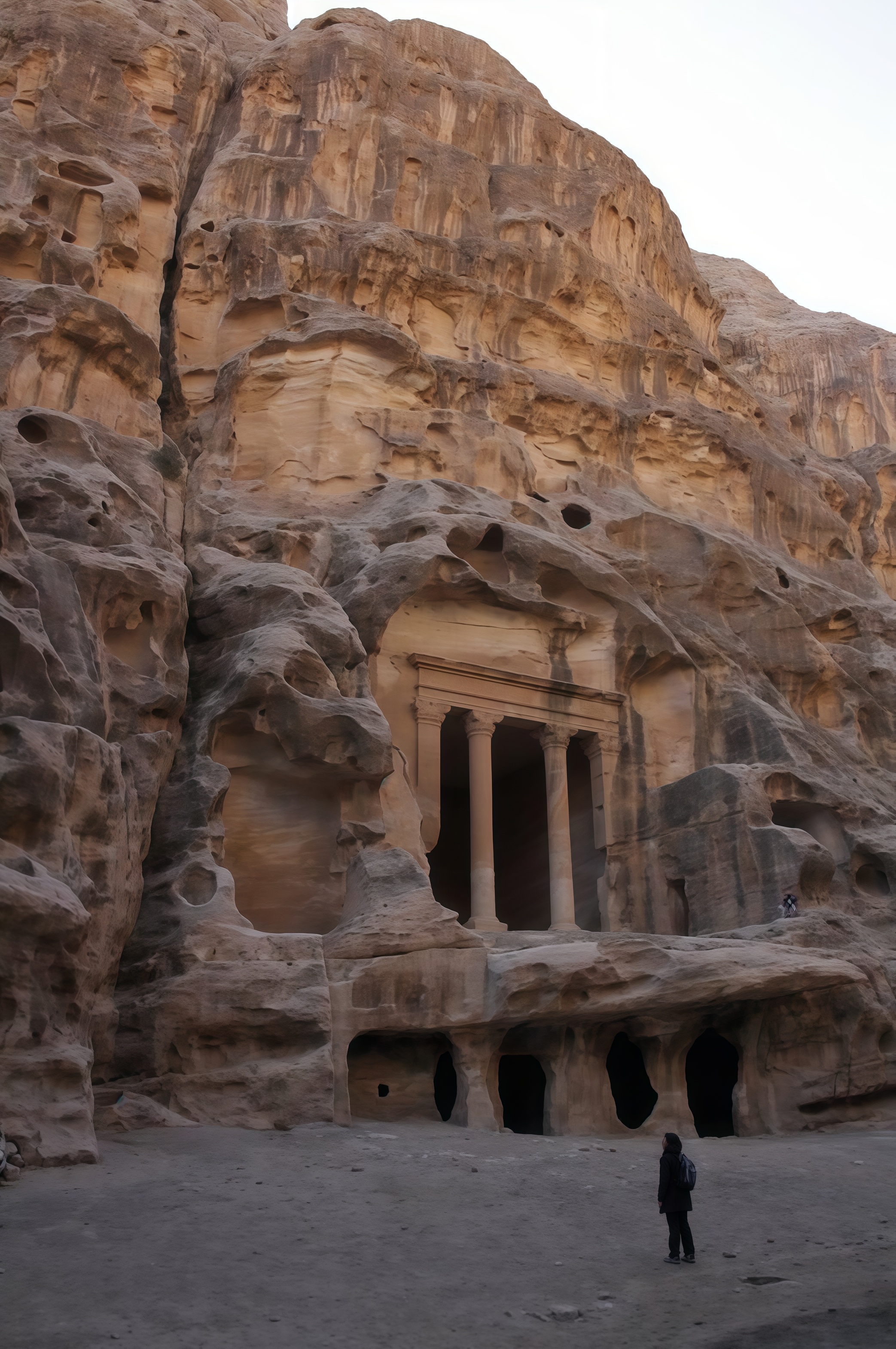
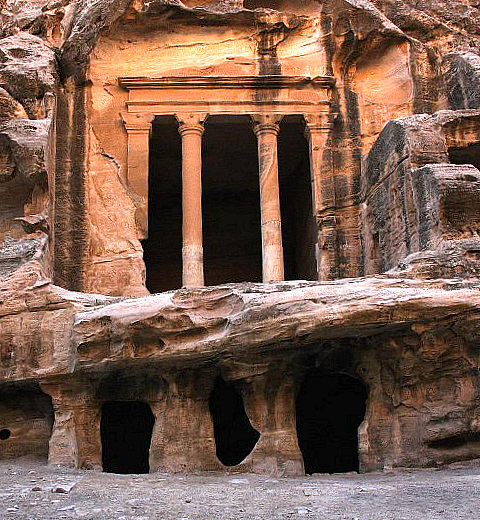
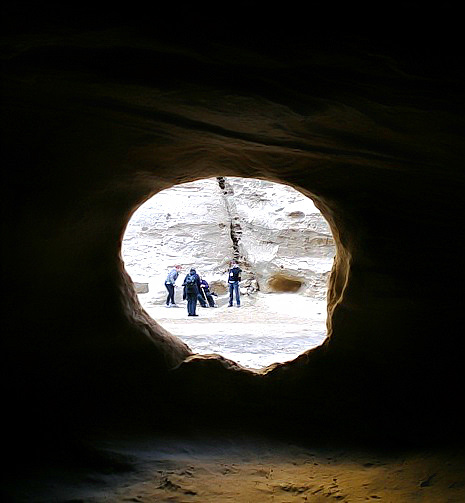
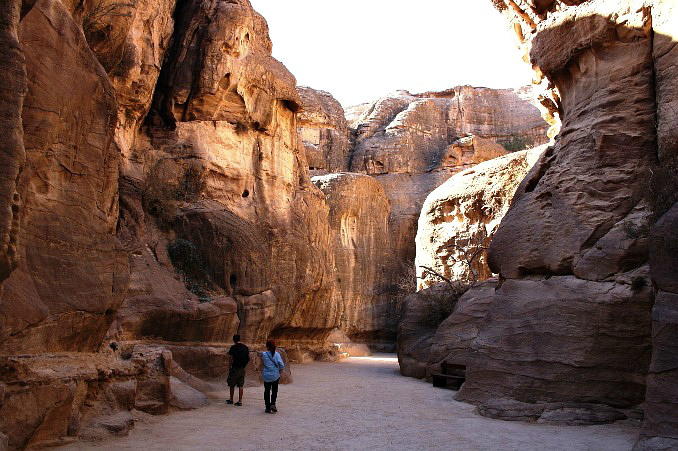

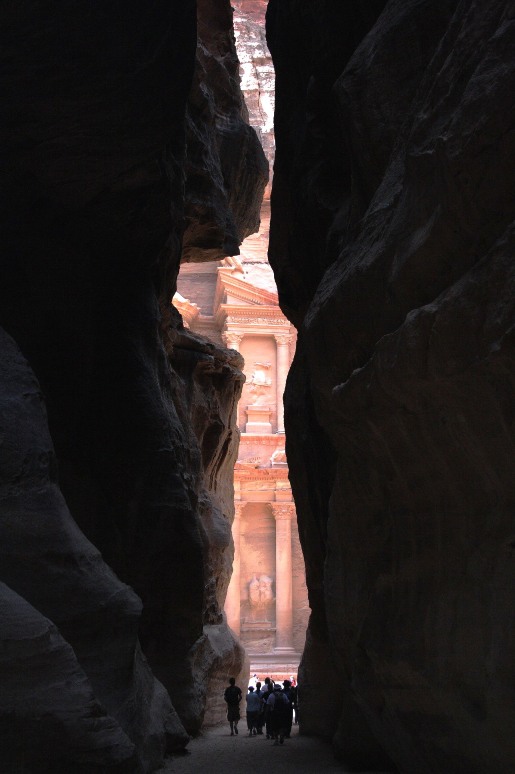
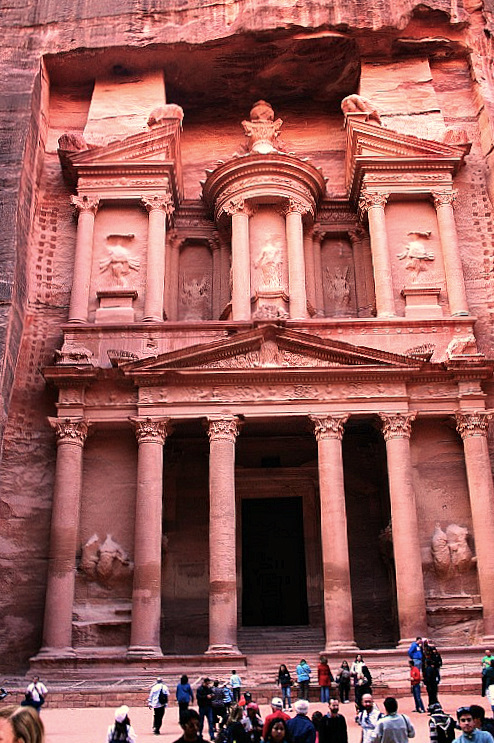
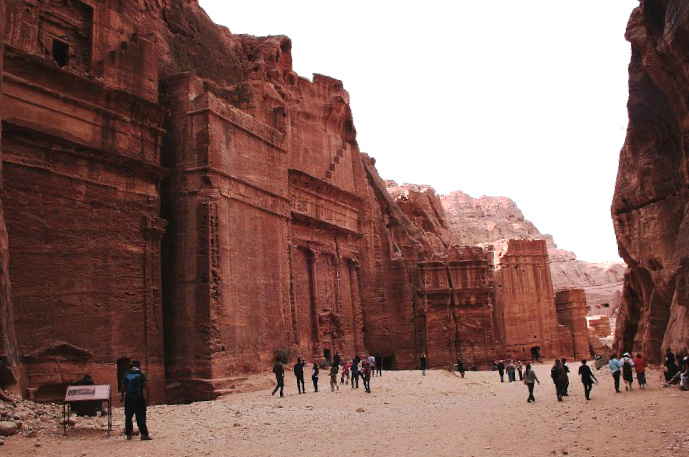
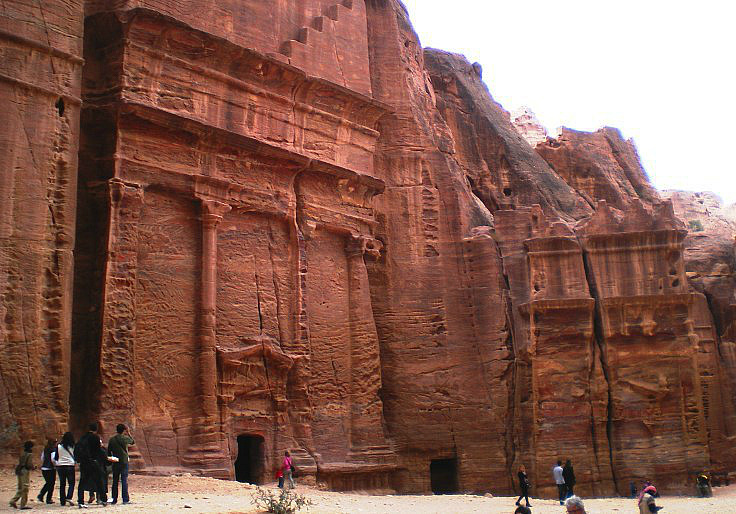
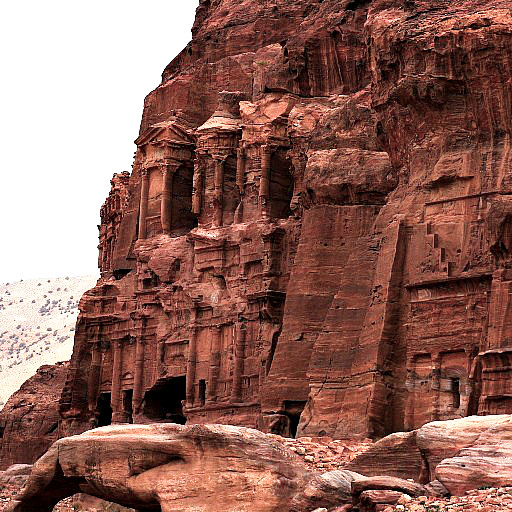
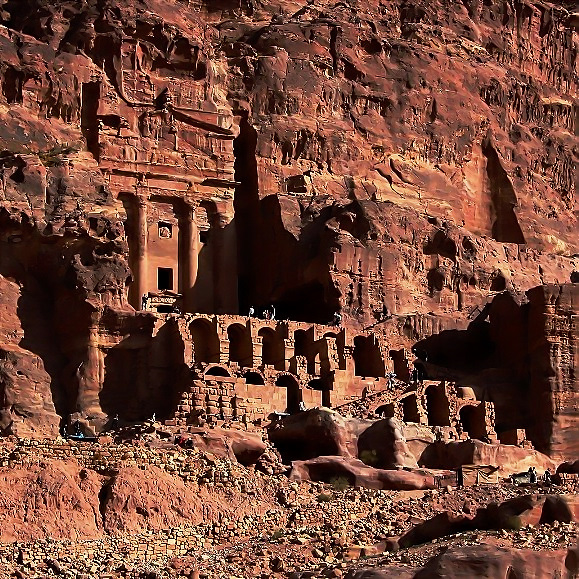
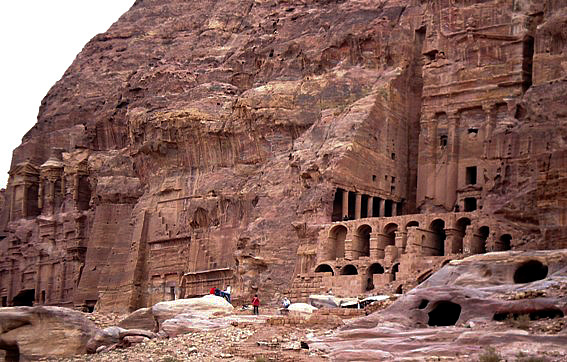
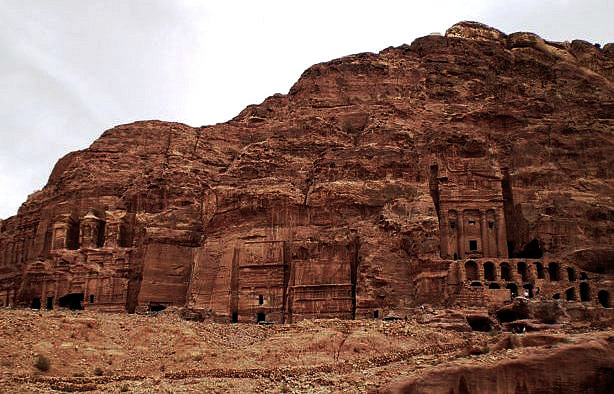
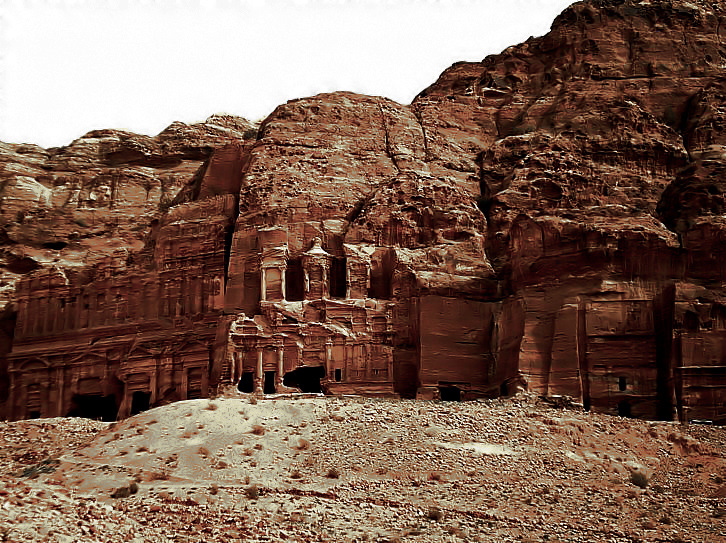
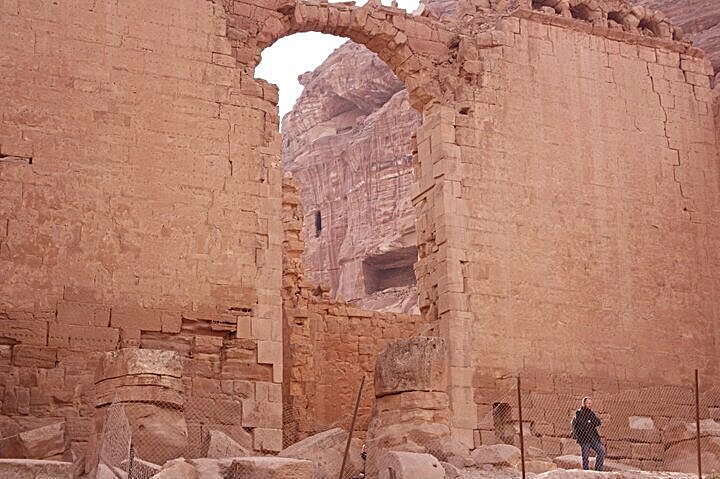
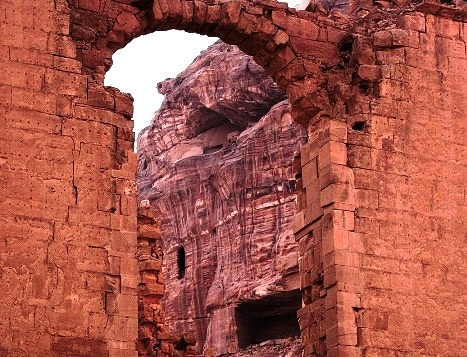

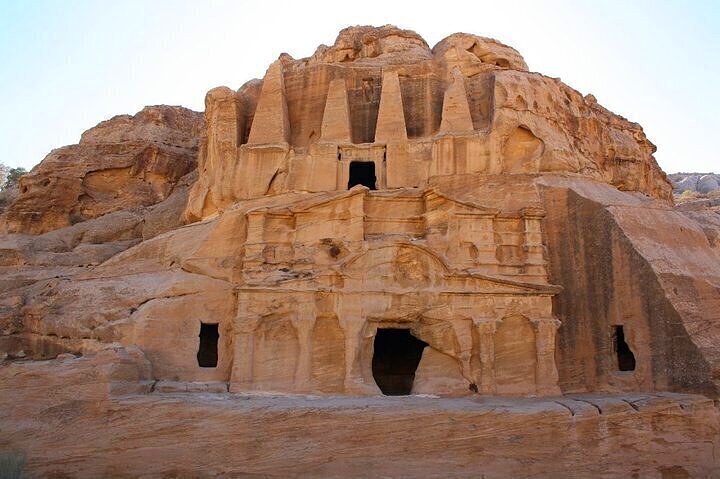
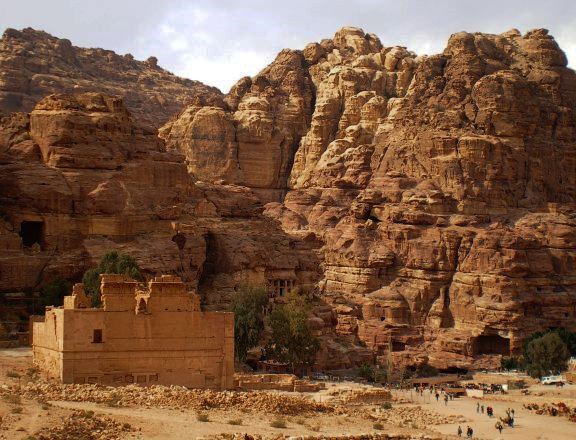
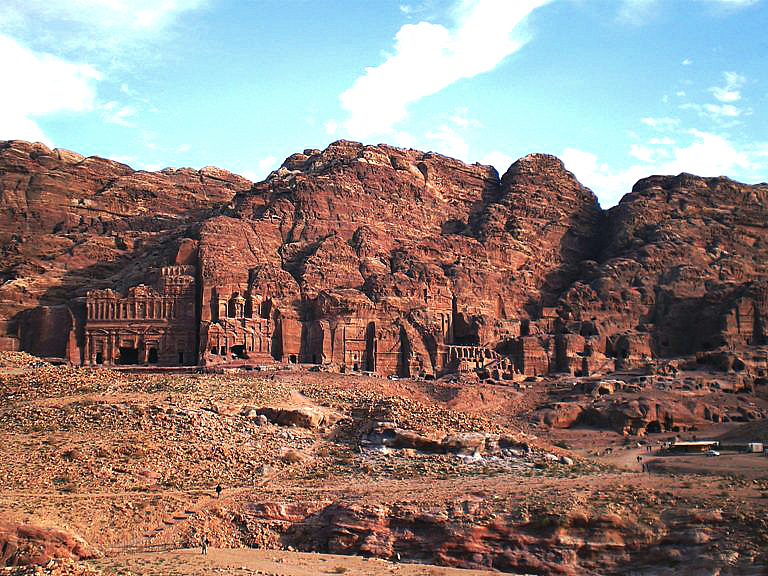
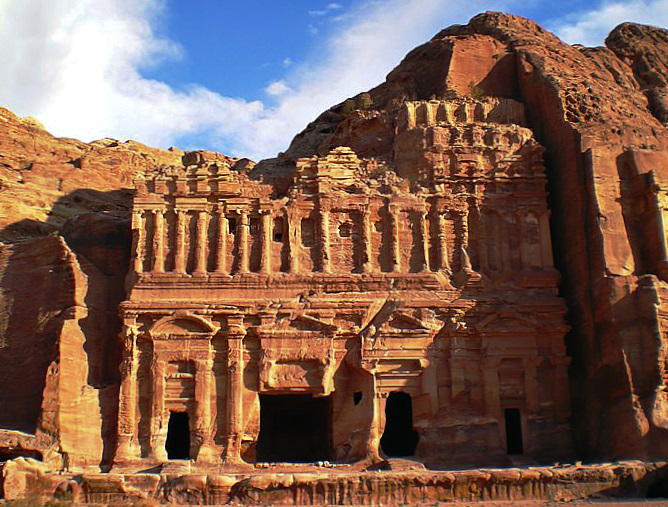
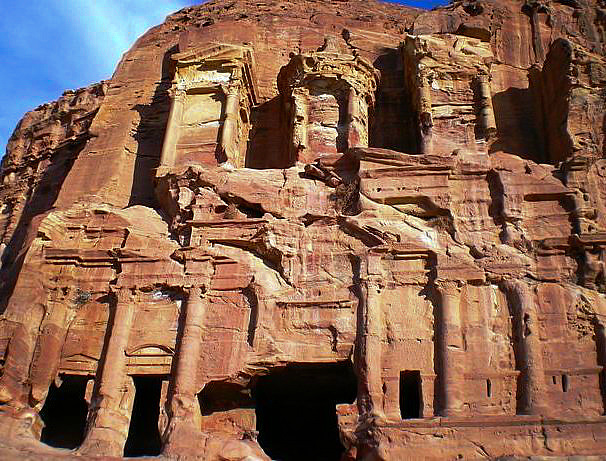
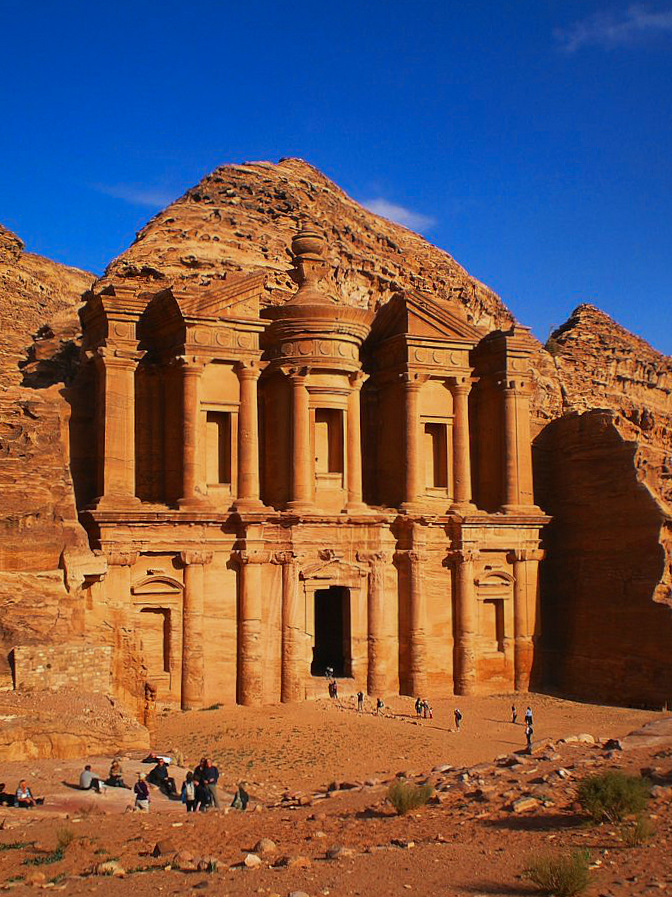
The surrounding landscape is a warren of eroded corridors between sandstone outcrops. Fingers of fields are cultivated by Bedouins or used to graze sheep and goats. Many of the rock formations have had dwellings carved into them as man-made caves, seemingly now unoccupied. The Bedouins prefer their tents.
Siq al-Barid (Little Petra), is separated by a few kilometres from Petra. It's best to visit here first. Impressive in its own right, it's a great teaser for the main site. Your expectations for Petra itself are set for something similar, which then heightens the impact of the grander big brother.
The stroll down to Petra is via a kilometre long siq, a deep geological split smoothed by water erosion and no wider than 3 metres at some points with walls up to 200 metres high.
The end of the siq reveals the Treasury. More likely built as a tomb and/or temple, it got its popular name from the belief that pirates had hidden treasure in the tholos (stone urn) which stands in the centre of the second level. In an attempt to release the suspected treasure, the Bedouins periodically fired guns at it. The bullets' scars are clearly visible.
Round a bend at the Treasury and the siq opens up and leads down to the complex of tombs, temples and simple, cave-like dwellings carved into the rock faces. Remnants of Roman era free standing structures are a bit worse for wear being more vulnerable to earthquakes than the rock-carved temples and tombs.
The Nabateans, a civilization that emerged in southern Jordan from a nomadic tribe that migrated gradually from Arabia during the sixth century BC. They settled in a number of places in southern Jordan, Palestine and in northern Arabia. Their capital city was Petra and for nomads they demonstrated quite a knack for rock carving.



























